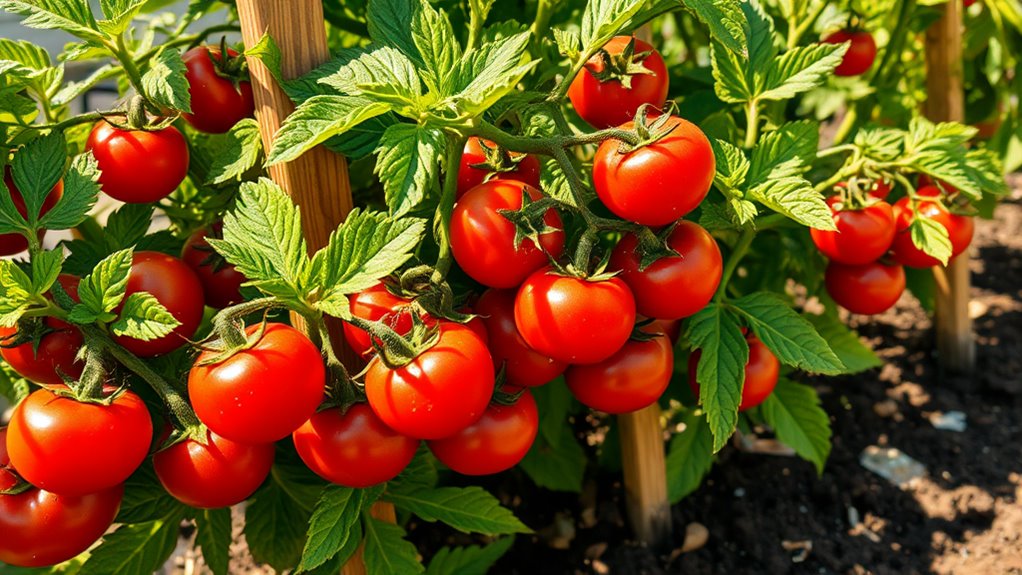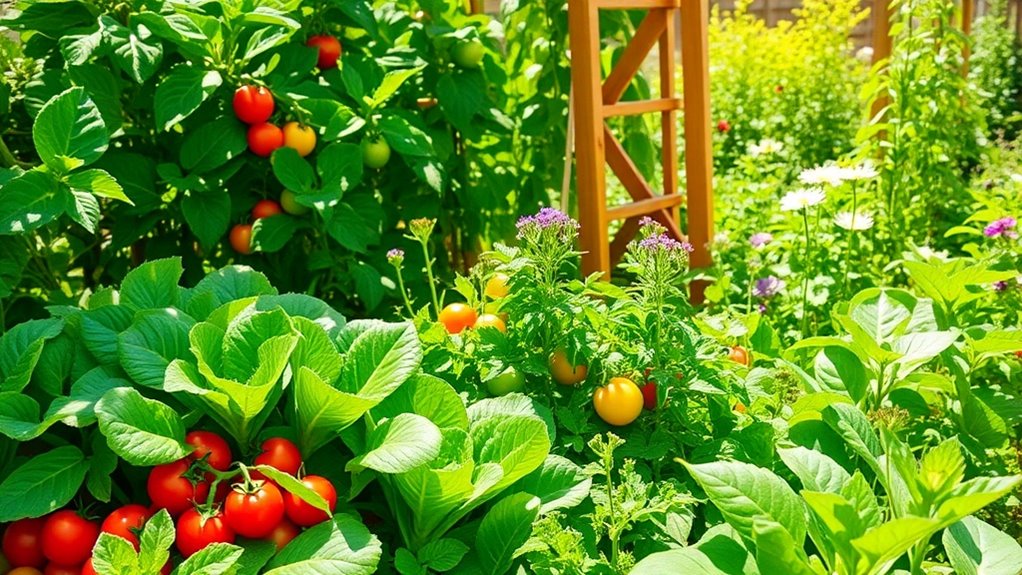My Tomatoes Never Grew Until I Tried This Simple Change
If your tomato plants are struggling, it might be time to assess your soil quality. Many gardeners overlook this crucial aspect, but nutrient-rich soil can transform your garden. Testing for essential elements and adjusting pH levels can make a significant difference in growth. You might be surprised at how these adjustments can enhance your plants’ vitality. But there’s more to successful gardening than just soil—let’s explore other key factors that could impact your tomato yield.
Understanding Tomato Plant Needs
When it comes to successfully growing tomatoes, understanding their specific needs is crucial.
Start by providing consistent watering, ensuring the soil stays moist but not waterlogged. Offer plenty of sunlight—at least six hours a day—and support your plants with stakes or cages. Additionally, consider mulching to retain moisture. Soil preparation is fundamental to nourishing your tomato plants and will help you achieve a fruitful and thriving garden.
The Importance of Soil Quality
Soil quality plays a pivotal role in the health and productivity of your tomato plants.
To ensure your soil is up to par, focus on these essentials:
-
Nutrient Content: Test for key nutrients, especially nitrogen, phosphorus, and potassium.
-
Drainage: Ensure your soil drains well to avoid root rot.
-
pH Levels: Aim for a pH between 6.0 and 6.8 for optimal growth. Additionally, be aware that signs of acidic soil can include poor plant growth and yellowing leaves, which may hinder your tomato plants’ development.
Watering Techniques for Optimal Growth
To boost your tomato plants’ growth, mastering effective watering techniques is crucial.
Water deeply but infrequently, allowing soil to dry slightly between sessions; this encourages deep root development. Early morning is the best time to water, reducing evaporation. Aim for one to two inches of water weekly, adjusting based on rainfall. Using mulch helps retain moisture and keeps roots cool. Additionally, consider the ideal watering schedule based on the specific needs of your plants and local weather conditions.
Pest and Disease Management Strategies
While you nurture your tomato plants, keeping an eye out for pests and diseases is essential for a bountiful harvest.
Here are three effective management strategies:
-
Regular Inspections: Check your plants weekly for signs of pests or disease.
-
Organic Pesticides: Use natural solutions like neem oil to combat infestations.
-
Proper Spacing: Ensure adequate airflow to minimize fungal infections. Additionally, consider using companion planting techniques to enhance growth and deter pests in your garden.
The Impact of Companion Planting
When you plant tomatoes alongside compatible crops, you can significantly boost their growth and resilience.
For example, pairing tomatoes with basil not only enhances flavor but also deters pests.
Additionally, planting marigolds can repel nematodes. Furthermore, utilizing natural sprays can enhance your pest control efforts while promoting a healthier garden ecosystem.





